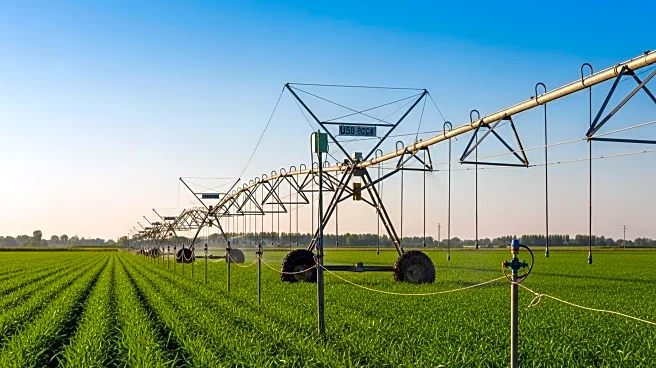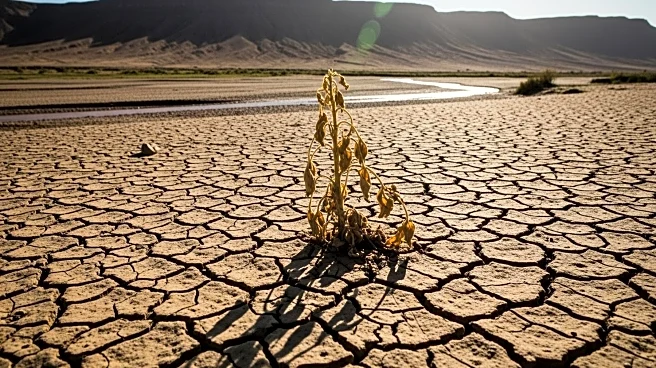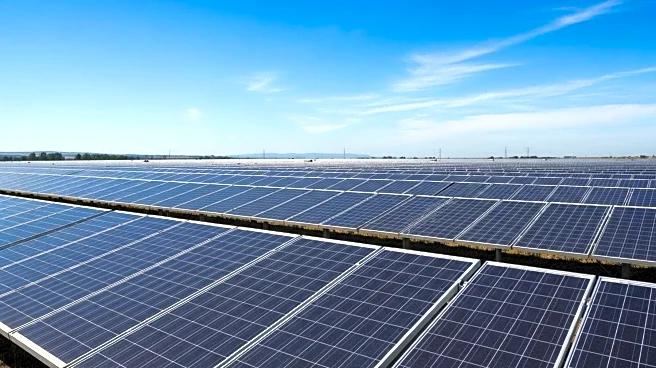What's Happening?
A study published in Nature Communications highlights the potential for extreme water shortages globally by 2100, with significant impacts expected in the western U.S. and other regions. Researchers used climate model simulations to project 'day zero drought' events, where regions could run out of water due to compounded stressors like reduced rainfall and increased demand. The study suggests that 74% of drought-prone areas may face severe droughts under high emissions scenarios, affecting 753 million people worldwide. The findings emphasize the urgency of preparing for water scarcity, as the time between drought events may be shorter than the events themselves, limiting recovery opportunities.
Why It's Important?
The study underscores the critical need for proactive measures to address water scarcity, particularly in regions like the western U.S. where demand is rapidly outpacing supply. The potential for severe droughts poses significant risks to agriculture, industry, and urban areas, impacting economic stability and public health. Decision-makers can use the study's projections to guide emergency responses and long-term policy planning, ensuring sustainable water management practices. The research highlights the importance of considering local and regional differences in water scarcity risks, enabling tailored solutions to mitigate the impacts of climate change on water resources.
What's Next?
Future analyses may incorporate more climate models to reduce uncertainty and better account for groundwater's role in buffering against drought. Researchers aim to provide more comprehensive data to guide policy and planning efforts. As the study is not the final word on water scarcity, ongoing research and collaboration among scientists, policymakers, and communities will be essential to develop effective strategies for managing water resources in a changing climate.











